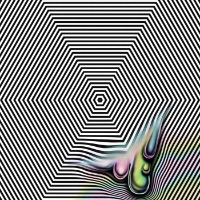- Digital
Fabio Fabor
Pape Satan
Four Flies
- Cat No: SPE44
- Release: 2022-10-14
- updated:
Track List
-
1. Fabio Fabor - Ad Inferos
02:54 -
2. Fabio Fabor - Acheron
03:08 -
3. Fabio Fabor - Infernal Galop
03:15 -
4. Fabio Fabor - La Forgia
03:31 -
5. Fabio Fabor - Segno Di Fuoco
02:16 -
6. Fabio Fabor - Caronte
03:02 -
7. Fabio Fabor - Dies Irae
03:40 -
8. Fabio Fabor - Stige
03:24 -
9. Fabio Fabor - Trillo Del Diavolo
02:38 -
10. Fabio Fabor - Dalle Sirene
03:57 -
11. Fabio Fabor - V Bolgia
02:35 -
12. Fabio Fabor - Diabolic Love
02:41
16bit/44.1khz [wav/flac/aiff/alac/mp3]
Fabio Borgazzi, also known as Fabio Fabor, was one of the most prolific library music composers in Italy between the 1960s and 1980s. A versatile and multi-talented musician, he explored almost all existing genres – from classical to jazz, from pop to easy listening, to electronic music – and released hundreds of records through his own publishing company, Minstrel, and its numerous sub-labels, such as World, Hard, Flam, Fonovideo and Ring.
Originally released on the Hard label in 1980, "Pape Satan" has become a cult record, one often regarded as a groundbreaking exploration of electronic music.
In this cutting-edge work Borgazzi makes extensive use of synthesizers (ARP 2600, ARP 3620, ARP Omni and Roland System 700), percussion, keyboard instruments (piano, harpsichord, Fender Rhodes) and voices, developing an abstract and experimental electro-acoustic soundtrack to a dark and infernal environment, or, as Borgazzi himself explained in the liner notes, an "eschatological-Dantesque environment caught in its side of transcendent imagination metaphysics and, sometimes, even ironic interpretation."
Originally released on the Hard label in 1980, "Pape Satan" has become a cult record, one often regarded as a groundbreaking exploration of electronic music.
In this cutting-edge work Borgazzi makes extensive use of synthesizers (ARP 2600, ARP 3620, ARP Omni and Roland System 700), percussion, keyboard instruments (piano, harpsichord, Fender Rhodes) and voices, developing an abstract and experimental electro-acoustic soundtrack to a dark and infernal environment, or, as Borgazzi himself explained in the liner notes, an "eschatological-Dantesque environment caught in its side of transcendent imagination metaphysics and, sometimes, even ironic interpretation."



